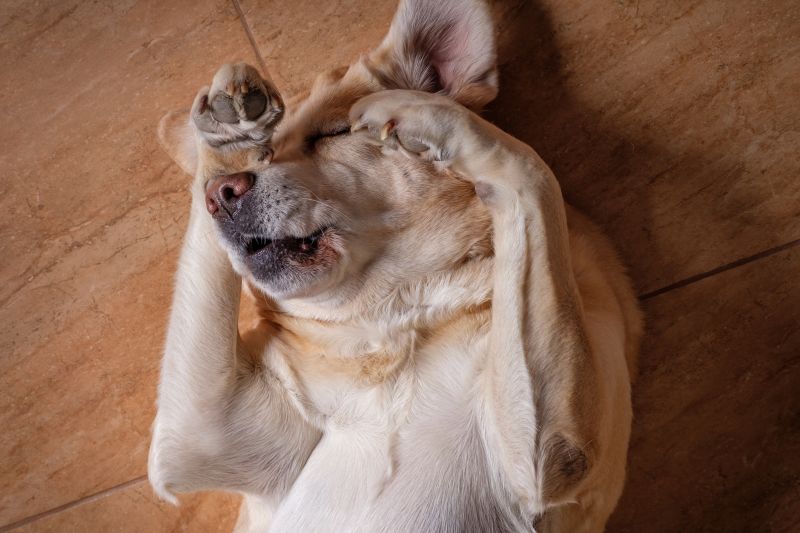
Hot Spots in College Station, Texas
Curing Dog Hot Spots: A Comprehensive Guide
5 Essential Steps to Soothe Your Dog's Irritated Skin
- Identify and Eliminate the Cause
- Cleanse and Debride the Hot Spot
- Apply Antiseptic or Medicated Treatment
- Prevent Licking and Scratching
- Monitor and Seek Veterinary Care if Needed
Dog hot spots, also known as acute moist dermatitis, are red, inflamed, and painful skin lesions that can cause significant discomfort for your canine companion. These hot spots often develop due to excessive licking, scratching, or biting, leading to hair loss, oozing, and even open wounds.
While hot spots are not typically life-threatening, they can be extremely bothersome for your dog and require prompt treatment to prevent further irritation and infection. Here's a comprehensive guide on how to effectively cure dog hot spots and keep your furry friend comfortable.
1. Identify and Eliminate the Cause
The first step in treating dog hot spots is to identify and eliminate the underlying cause. Common triggers include:
* Allergies: Food allergies, flea allergies, or environmental allergies can cause intense itching, leading to self-inflicted hot spots. * Parasites: Fleas, ticks, and mites can cause skin irritation and excessive scratching, which can develop into hot spots. * Stress and Anxiety: Stress-induced licking or chewing can lead to hair loss and hot spot formation. * Matted Fur: Tight knots and mats can trap dirt, moisture, and allergens, causing irritation and hot spots. * Ear Infections: Chronic ear infections can trigger excessive scratching around the ears, leading to hot spots. Once you've identified the cause, take steps to address it. For allergies, consider allergy testing and dietary changes. For parasites, use effective flea and tick prevention products. Address stress with behavioral modifications and calming aids. Regular brushing and grooming can prevent matting. Consult your veterinarian for ear infection treatment.2. Cleanse and Debride the Hot Spot
Gently cleanse the hot spot using a mild, alcohol-free shampoo or antiseptic solution. This will help remove dirt, debris, and bacteria that can contribute to infection. If the hot spot is crusted or scabby, you may need to debride it, which means carefully removing the dead tissue and exudate. Use sterile gauze or tweezers to gently debride the area, avoiding further irritation.
3. Apply Antiseptic or Medicated Treatment
After cleansing and debriding, apply an antiseptic or medicated treatment to the hot spot. This will help kill bacteria and promote healing. Several effective topical treatments are available, including:
* Chlorhexidine or benzoyl peroxide solutions: These antiseptics help reduce bacterial growth and promote healing. * Hydrocortisone sprays or creams: These mild corticosteroids provide anti-inflammatory relief and reduce itching. * Antibiotic ointments: If the hot spot is infected, your veterinarian may prescribe an antibiotic ointment. Follow the instructions on the product label carefully and apply the treatment as directed. Avoid using over-the-counter human medications on your dog, as these can be harmful.4. Prevent Licking and Scratching
It's crucial to prevent your dog from licking or scratching the hot spot, as this can worsen the inflammation and delay healing. Consider using an Elizabethan collar, also known as a cone of shame, to deter licking. You can also try bitter apple spray or a licking deterrent cream to discourage chewing or licking.
5. Monitor and Seek Veterinary Care if Needed
Regularly monitor the hot spot for signs of improvement or worsening. If the hot spot appears to be getting larger, more inflamed, or producing pus, consult your veterinarian immediately. They may recommend additional treatment, such as oral antibiotics or corticosteroids.
Frequently Asked Questions
What are the signs of dog hot spots?
Dog hot spots typically appear as red, raw, and inflamed areas of skin, often with hair loss, oozing, or open wounds. Your dog may also exhibit excessive itching, licking, or scratching in the affected area.
How can I prevent dog hot spots?
Preventing dog hot spots involves addressing the underlying causes. Regularly groom your dog to remove mats and tangles, which can trap dirt and allergens. Use effective flea and tick prevention products to eliminate parasites. Manage your dog's allergies with proper diet and environmental control. Consult your veterinarian for ear infection treatment if needed.
Can I treat dog hot spots at home?
Mild hot spots can often be treated at home with proper cleansing